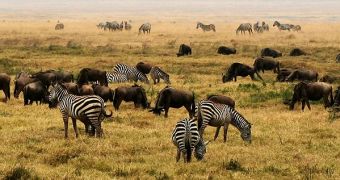The representatives from WWF's Coastal East Africa thought now is a good time to report that the East Coastal Africa ecosystem is threatened by human influence. Its poor inhabitants are struggling to put food on table, at the environment's expense.
Local people discovered throughout time that selling timber is a profitable line of business, which fills up their pockets. Many mouths are fed during this process.
Most of the timber used as a food ticket by the members of local communities ends up in China, where it is involved in several manufacturing processes.
It is known that the individuals are selling their precious resources short, since China agrees to buy the amount while paying a lot less than its actual value on the market.
“Up to 90% of all timber extracted from forests in the region is illegally logged. A large part of this timber is exported, primarily to China, for prices well below the actual value of the wood. This adds to the local demands for firewood and timber from the growing local population, and large-scale clearing of forests for agriculture and other purposes.”
“ The poor communities from the region, those that are depending on these resources for their livelihoods, are the ones suffering most,” declared WWF Coastal East Africa Initiative Leader Peter Scheren.
The WWF officials are not talking about any kind of surface. The East Coastal Africa is one of the most exquisite areas on the Globe, due to its natural beauty and extraordinary biodiversity. It is the habitat of several unique creatures.
The region is the home of surprises, since biologists continue to be amazed while discovering new creatures almost every year.
So far, in about 10 years, they were able to confirm the presence of 400 new species, out of which 261 are invertebrates, 28 fish, 25 amphibians, 19 reptiles, 10 birds, 7 mammals and 93 plants.
Such an amazing natural shelter should be preserved at any costs, but the poverty of its human inhabitants goes beyond any limit and makes the eco-groups' efforts vanish into thin air.
Since the population is expected to double by 2030, this forecast puts the resources under a lot of pressure.
The timber, woodfuel and charcoal natural resources will not last forever, especially when more and more people depend on it and continue to sell them under their real value on the black market.

 14 DAY TRIAL //
14 DAY TRIAL //